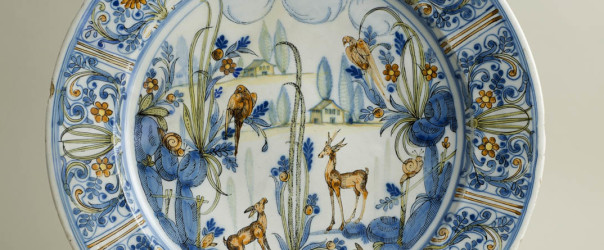

The museum stretches over four floors of the Palazzo del Monte di Pietà. The rich collection that holds over a thousand pieces is arranged and organized into single collections, alternating type and chronology.
As well as pieces owned by the Municipal Art Gallery, ranging from a refined pottery set formerly belonging to the old San Paolo Hospital to the important pieces donated by Prince Boncompagni Ludovisi, there are also precious collections acquired over the years by the Agostino De Mari Foundation. Among those worth mentioning there are Nena and Maternità by Arturo Martini, the vases from the antique pharmacy Cavanna di Genoa – whose whereabouts were unknown for several years and was recently found once again, as well as the treasures of the Bixio collection. The section dedicated to the contemporary period includes the prototypes of the works presented by major contemporary artists and designers for Attese Edizioni, part of the Biennale di Ceramica nell’Arte Contemporanea.
There are a number of multimedia resources included in the tour, with the unique quadrasphere structure telling the evocative tale of the history and development of ceramic art in Liguria. There is also an interactive multimedia platform that allows visitors to discover the secrets behind the world of ceramics.
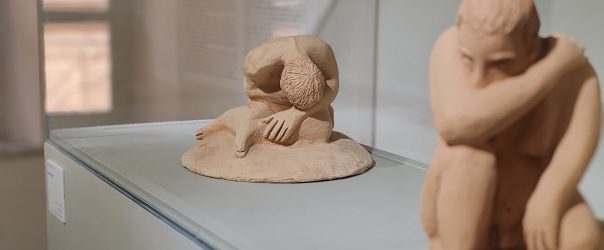

The tour continues on the first floor of the building, with ceramics with religious iconography, including Madonna della Misericordia by Beato Botta, who created this portrait in the San Bernando valley in 1536, as well as a nativity scene Presepe by Antonio Tambuscio.
The two final sections of this floor focus on pottery and furnishing pieces. The display includes objects from bourgeois houses in the 19th century, with Neoclassical pieces from the Flavia Folco collection, as well as items of more humble origins; yellow-glazed terracotta pottery with simple sponge decorations, a testament to the serial production that surged from the area of Albisole between the 19th century and the first decades of the 20th century.
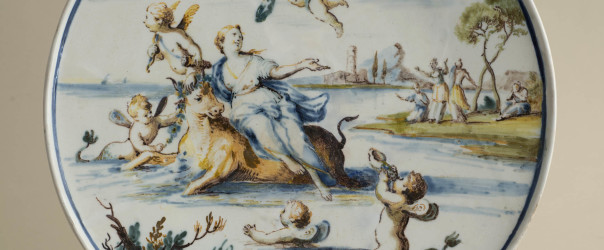

The tour through the exhibition starts on the second floor, with the famous saucer Il Ratto di Europa (1721), a rare example of the work of the painter Gio Agostino Ratti, one of the most influential representatives of Ligurian majolica style from the 18th century. In the adjacent hall, under the fresco painted by Bartolomeo Guidobono Il Carro del Sole, we can find important pieces from the Baroque period. Continuing on, next to the faint frescoes by the painter Lorenzo Fasolo dating back to the 16th century, panels decorated with azulejos and laggioni from the 15th and 16th century are displayed, leading to a room where we can find items from the old apothecary from the Cavanna di Genova pharmacy.
The section dedicated to 18th century ceramics is displayed inside a spectacular hall with a large glass structure that contains works by the artist Giacomo Boselli from Savona. Lastly, two spacious rooms encase the rich collection donated to the Municipal Art Gallery by Prince Arimberto Boncompagni Ludovisi and his spouse Rosella. In the first room, a parade of jars, vases, tulip vases, trays and saucers are displayed inside a fascinating steel and glass “exhibition machine”, spread over two levels.
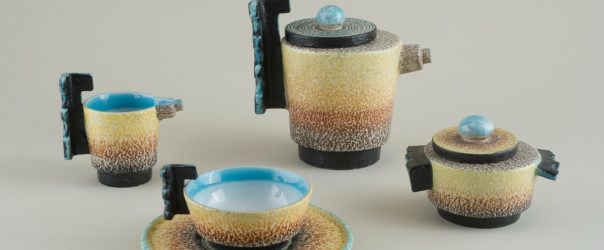

On the third floor of Palazzo del Monte di Pietà we can find the old apothecary from the San Paolo Hospital in Savona on shelves that cover the entire wall and perimeter of the first hall, virtually recreating the ancient room of the apothecary. In the two adjacent rooms, a selection of works dating from the first decades of the 20th century explores the evolution of the work of manufacturers from Savona and Albisola during that period, whose style was deeply influenced by the early international decorative art trends at the beginning of the 1900s, ranging from Art Déco and Rationalism to Futurism.
In the area dedicated to artists who worked in Savona and Albisola in the second half of the 20th century, we can find works from Jorn, Lam, Capogrossi, Dova, Treccani, as well as Antibo, Carlé and Lorenzini. At the centre of the second hall, the impressive Albero di kaki by Maria Galfré exploits the opening in the ceiling with foliage that connects the last two floors in magnificent style.
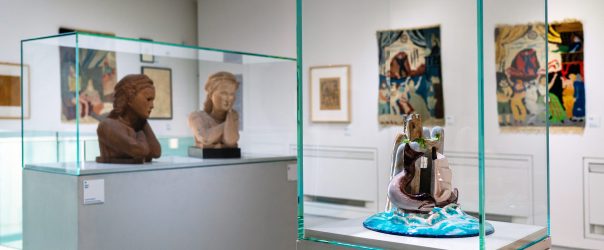

The fourth floor – an open space filled with natural light – focuses on more modern ceramics and houses the stunning works of more than 30 internationally renowned artists, including and designers Getulio Alviani, El Anatsui, Bili Bidjocka, Alberto Garutti, Yona Friedman, Martí Guixé, Corrado Levi, Adrian Paci, Michelangelo Pistoletto, Franco Raggi and Luca Vitone.
There is an area of the hall that showcases some examples of sculptural art from the 20th century, including fireclay works from the prestigious Italian sculptor Arturo Martini, a testament to his years spent in Liguria with Nena, one of his most famous works, and Maternità, (1931). There are also two of Agenore Fabbri’s Ballerinas a testament to the lifelong work of the Italian sculptor from Pistoia.
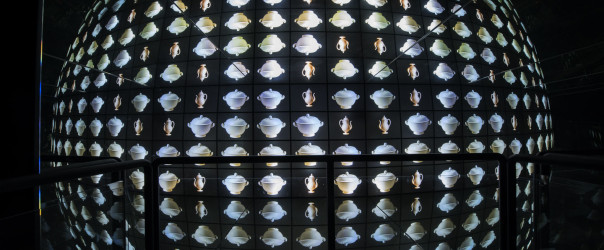

The tour of the museum ends with a multimedia set-up created by the physicist Paco Lanciano. Worth noting is the quadrasphere, a structure which, thanks to a set of mirrors and monitors, shows multiple simultaneous projections, creating a sort of highly advanced kaleidoscope. Through evocative images and sounds, the quadrasphere narrates the wonderful tale of the history and evolution of ceramics in Liguria.